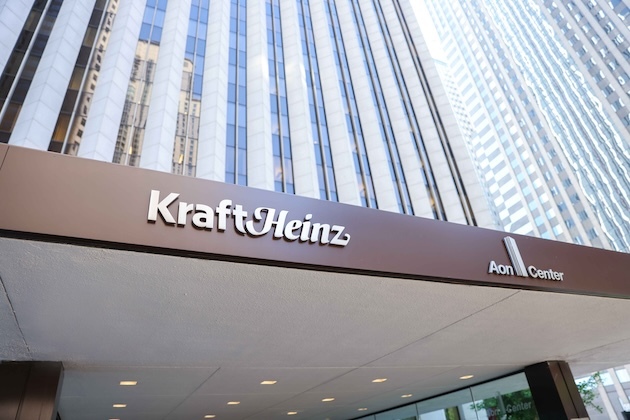M&A Process and Stages: A Step-by-Step Guide to the M&A Process
7Newswire
22 May 2023, 18:26 GMT+10

The business world is continuously changing as businesses look for methods to grow, diversify, and obtain a competitive advantage. Mergers and acquisitions (M&A) is one technique that has grown significantly in popularity in recent years. M&A deals with the merger of two or more businesses into one organization or the purchase of one business by another. This procedure takes careful preparation, due diligence, and negotiation and may be difficult and complex. We will present a thorough, step-by-step overview of the M&A process in this post, examining the many stages involved and the crucial factors for effective implementation.
I. Pre-Deal Preparation
Pre-deal planning is essential before beginning any M&A transaction. In this phase, a number of tactical decisions are made, goals are determined, and a strong team is put together in order to successfully traverse the challenging process that lies ahead.
Specifying Objectives and Strategies
Clearly defining objectives and a strategic justification for pursuing the deal is the first phase in the M&A process. This involves figuring out if the objective is to expand the market, obtain access to new technologies or distribution channels, get rid of competitors, or improve cost-effectiveness. Setting up a clear plan will act as a foundation for direction during the full procedure.
Identifying Potential Targets
The next stage after establishing the strategic objectives is to find possible target firms that fit the intended objectives. This calls for in-depth market research, an analysis of the sector, and the taking into account of variables like size, financial stability, development potential, and cultural compatibility. It is crucial to compile a selection of appropriate objectives for further assessment.
Assembling the M&A Team
A diverse team with knowledge in areas such as finance, legal, tax, operations, and human resources is required to carry out a successful M&A deal. Putting together the proper team is essential to ensuring thorough due diligence, successful negotiation, and smooth integration after the deal. Both internal team members and outside advisers, including investment bankers, solicitors, and consultants, may be a part of this group.

II. Due Diligence
The due diligence step, which entails a detailed inspection and appraisal of the target company's financial, operational, legal, and commercial elements, is a crucial stage in the M&A process. In this stage, the transaction's possible risks, possibilities, and synergies are to be found.
Financial Due Diligence
The target company's financial statements, including income, costs, assets, liabilities, cash flows, and important financial ratios, must be thoroughly examined as part of the financial due diligence process. The goal is to examine the transaction's financial sustainability as well as the accuracy of the target's financial information and any concealed obligations or dangers.
Legal Due Diligence
The target company's legal papers, contracts, intellectual property rights, litigation history, regulatory compliance, and any other legal duties or dangers must all be thoroughly examined as part of the legal due diligence process. The success of the transaction might be impacted by prospective legal obstacles, liabilities, or open legal concerns, which must be identified at this time.

Operational Due Diligence
The operational capabilities, procedures, and infrastructure of the target firm are assessed throughout the operational due diligence process. This involves analyzing supply chain management, evaluating the effectiveness of manufacturing or service delivery systems, and detecting any operational risks or inefficiencies. Planning the merger and realizing the synergies depend heavily on an understanding of the operational elements of the target firm.
Commercial Due Diligence
Commercial due diligence focuses on analyzing the market position, competitive landscape, clientele, sales and marketing plans, and growth prospects of the target organization. This research aids in evaluating the target company's market share, growth prospects, and possible synergies that may be realized via the union of the two businesses.
III. Negotiation and Deal Structuring
The next phase of the M&A process is the negotiation and deal structuring, which comes after the due diligence phase is over and a thorough understanding of the target firm has been attained. In order to secure a mutually advantageous agreement, this step entails a thorough evaluation of a number of aspects, including valuation, deal terms, and transaction structure.
Valuation
Any M&A transaction must include valuation since it establishes the price at which the buyer is willing to purchase the target business. Depending on the industry, business size, financial performance, and market circumstances, several valuation techniques may be used. Discounted cash flow analysis, similar company analysis, and asset-based valuation are common valuation methods. Striking a balance between a fair valuation for both parties and the transaction's strategic goals is crucial.

Deal Terms and Structure
The next stage is to specify the deal terms and structure after the valuation has been calculated. This involves choosing the kind of transaction (stock purchase vs. asset acquisition), the mix of compensation (cash, stock, or a combination of both), and the conditions of payment. Important clauses including non-compete agreements, earn-outs, and prerequisites for the transaction's conclusion are included in the deal terms as well. A successful M&A agreement depends on negotiating favorable contract terms that safeguard the interests of both parties.
Negotiation and Documentation
In order to get to a mutually beneficial agreement, negotiation is essential. To address issues, settle disagreements, and establish the deal's parameters, both sides participate in conversations and negotiations. A purchase agreement, also known as a legally binding contract, is created after skilled negotiators from both the buyer and the target firm collaborate to achieve an agreement. The rights, responsibilities, and terms regulating the transaction are described in the purchase agreement.
IV. Stakeholder and Regulatory Approvals
The M&A deal needs regulatory approvals and the backing of important stakeholders when the negotiating process is through. In this phase, permission from pertinent regulatory agencies is sought, along with shareholder and board approval and resolution of any antitrust or competitive issues.
Regulatory Approvals
To guarantee compliance with applicable laws governing mergers and acquisitions, such as securities laws and competition laws, M&A transactions are closely regulated. Government agencies like antitrust authorities, securities commissions, or sector-specific regulatory organizations may need to approve the deal, depending on the number of jurisdictions involved and the magnitude of the transaction. To proceed with the transaction, the parties involved must understand the regulatory environment and adhere to all applicable laws.

Shareholder and Board Approvals
An M&A transaction's success, particularly in the case of public firms, depends on shareholder and board support. Major purchases are subject to shareholder approval, which is required in order to move forward with the acquisition. On the other hand, board approvals entail the board of directors of the target firm approving the recommendation of the transaction to the shareholders. To win their support and overcome any possible opposition, shareholders and boards of both firms must be actively engaged.
V. Integration and Post-Merger Activities
The integration and post-merger operations are part of the M&A process's last phase. In order to realize the anticipated synergies and forge a cohesive entity, integration refers to the process of merging the operations, systems, cultures, and staff of the target and acquiring firms.
Integration Planning
Planning for integration starts long before the deal is finalized. It entails creating a thorough integration plan, specifying precise goals and objectives, and forming an integration team in charge of managing the procedure. Organizational structure, systems integration, cultural alignment, employee and customer retention, and other important topics should be included in the integration strategy. To reap the benefits of a merger or acquisition, a well-executed integration strategy is essential.
Cultural Integration
Managing cultural integration is one of the biggest obstacles to post-merger integration. Companies frequently have diverse organizational cultures, thus it is important to carefully consider how to harmonies values, conventions, and work procedures when combining two organizations. The staff of both organizations must be encouraged to communicate openly, to uphold openness, and to feel a feeling of oneness. Initiatives for integrating cultures, like as leadership training, communication channels, and team-building exercises, can assist close the gap and support a smooth transition.
Systems and Operations Integration
Another crucial component of post-merger activity is the integration of systems and operations. To reduce duplication and increase efficiency, this entails coordinating the IT infrastructure, financial systems, supply chains, and other operational activities. To achieve a smooth transfer without interfering with daily operations, a thorough integration strategy that includes the schedule, important milestones, and roles is vital.
Human Resources and Talent Management
Maintaining essential talent and an engaged staff throughout the post-merger era requires careful management of human resources. This entails resolving staff issues, making roles and duties clear, and putting retention plans into action. The management of the integration of employee benefits pay plans, performance review procedures, and cultural integration efforts falls within the purview of human resources departments.
Communication and Stakeholder Management
To keep stakeholders informed and involved throughout the integration process, effective communication is essential. This includes outlining the transaction's advantages, responding to queries, and giving updates on the integration process. Regular, open communication promotes expectation management, trust-building, and the reduction of any possible opposition or ambiguity. Share
Share
 Tweet
Tweet
 Share
Share
 Flip
Flip
 Email
Email
Watch latest videos
Subscribe and Follow
Get a daily dose of Hawaii Telegraph news through our daily email, its complimentary and keeps you fully up to date with world and business news as well.
News RELEASES
Publish news of your business, community or sports group, personnel appointments, major event and more by submitting a news release to Hawaii Telegraph.
More InformationInternational
SectionSummer could strain power supply in US, Canada, grid operator warns
WASHINGTON, D.C.: Parts of the U.S. and Canada may not have enough electricity this summer if hot weather causes more people to use...
Trump teaser on new F-55 warplane and upgraded F-22 Super
DOHA, Qatar: President Donald Trump has floated the idea of a new twin-engine warplane, potentially called the F-55, along with a significant...
Bipartisan Group of U.S. Senators Urges Trump Administration to Press for End to Gaza Blockade
WASHINGTON, DC - A coalition of 29 U.S. senators, spanning both parties, introduced a resolution on Thursday calling on the Trump administration...
Myanmar's civilian population reeling under end to USAID
For decades, the US Agency for International Development (USAID) has been vital in combating HIV across the Asia–Pacific region, where...
Citadel CEO to loan rare US documents for public exhibit
MIAMI, Florida: Ken Griffin, the CEO of Citadel and a billionaire investor announced this week he would loan his rare first-edition...
Israel steps up attacks on Gazans
GAZA - Israel Air Force pilots have heavily bombarded Gaza this week, killing hundreds and severely wounding hundreds more. The...
Business
SectionSummer could strain power supply in US, Canada, grid operator warns
WASHINGTON, D.C.: Parts of the U.S. and Canada may not have enough electricity this summer if hot weather causes more people to use...
Amid retail slowdown, Dick’s Sporting to acquire Foot Locker
CORAOPOLIS, Pennsylvania: Dick's Sporting Goods is set to acquire Foot Locker in a US$2.4 billion deal, marking the second major footwear...
Walmart warns shoppers of price hikes amid rising tariffs
BENTONVILLE, Arkansas: Walmart shoppers are bracing for price hikes as the world's largest retailer prepares to pass on the impact...
Tyson CEO says cattle supply recovery underway
CHICAGO, Illinois: U.S. cattle farmers have either started rebuilding their herds or are close to it, according to Tyson Foods CEO...
Tariff threat pushed US smartphone shipments up by 30% in March
WASHINGTON, D.C.: Smartphone shipments to the United States jumped 30 percent in March as manufacturers including Apple, Samsung, and...
Kraft Heinz to invest $3 billion in US plants despite gloomy outlook
CHICAGO, Illinois: Kraft Heinz is committing US$3 billion to revamp its U.S. manufacturing plants, marking its largest investment in...












